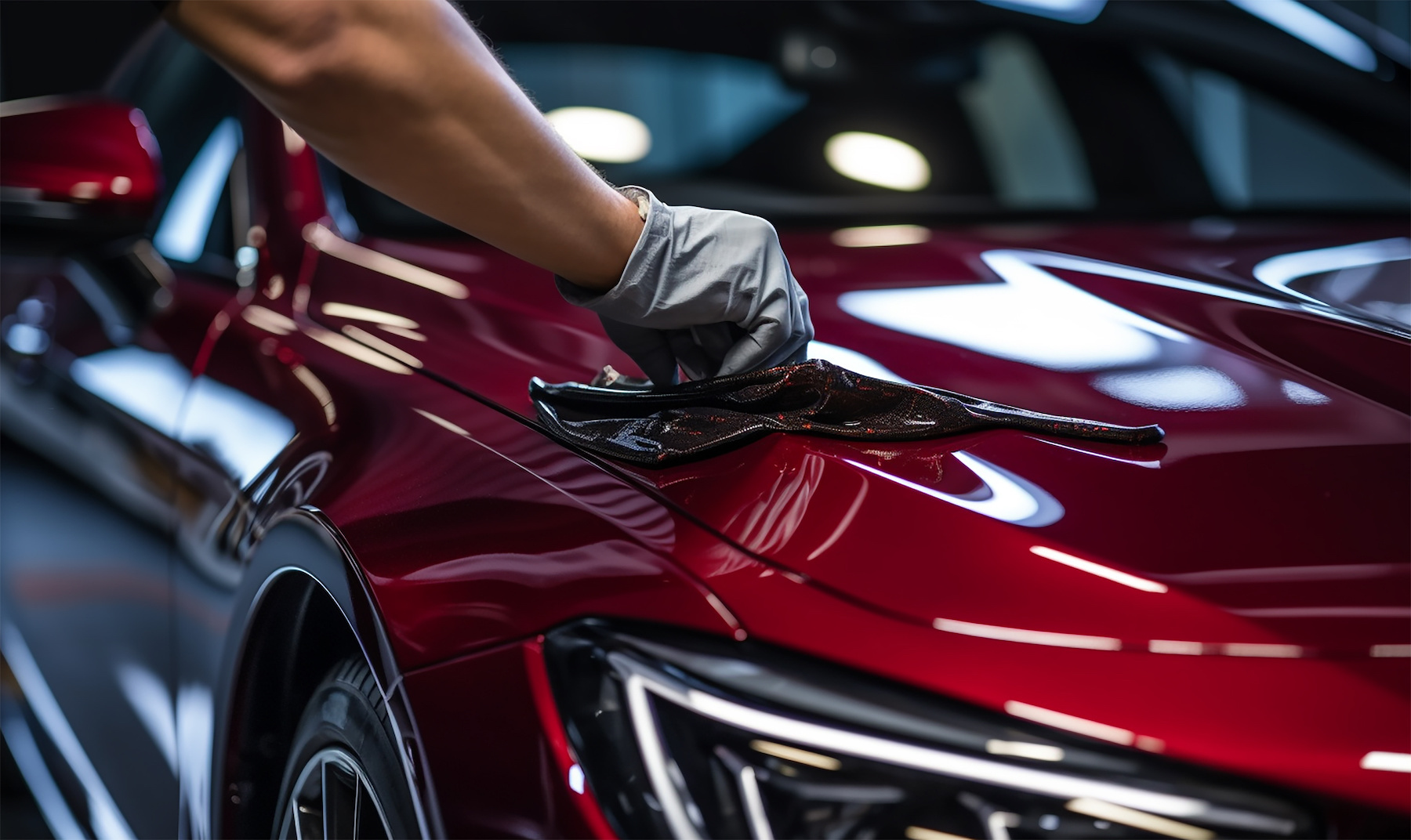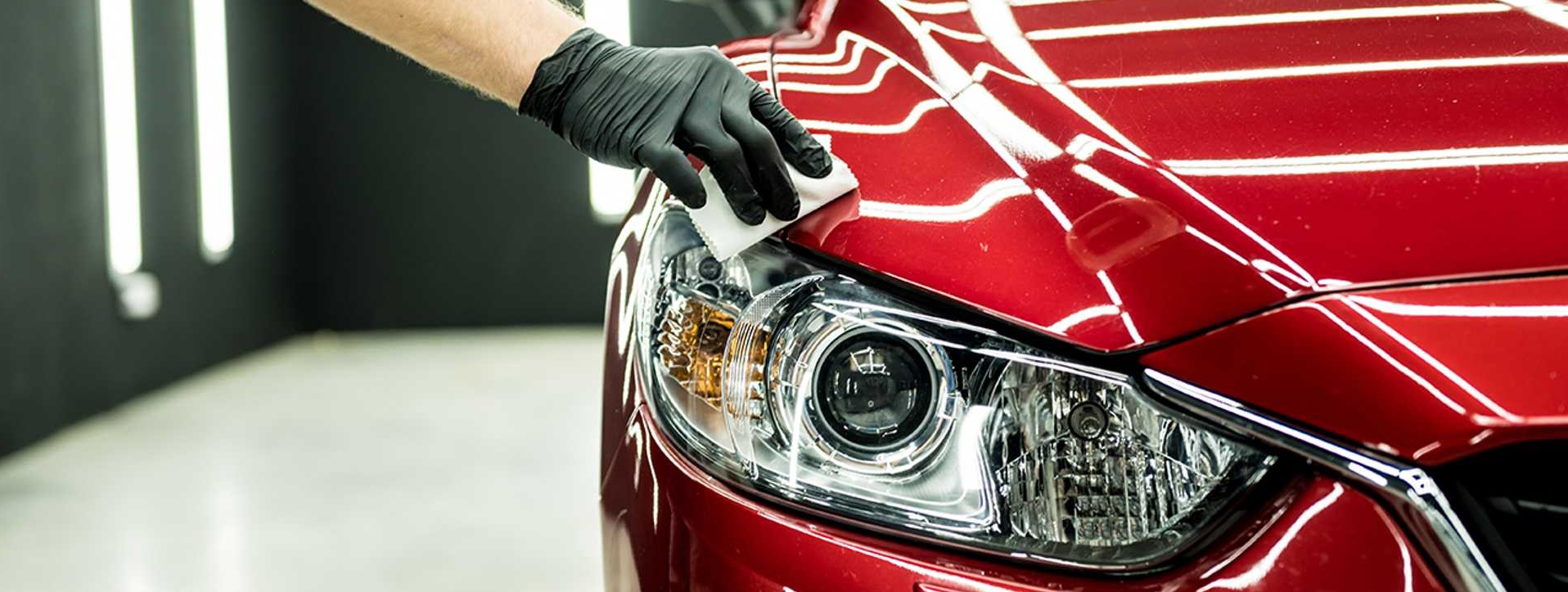Check Out Just How Ceramic Finish Can Change Your Lorry's Surface and Performance
Ceramic coating stands for a substantial advancement in auto surface area protection, using a resilient, hydrophobic barrier that boosts both appearance and durability. As we explore the ins and outs of ceramic finishing, the effects for your car's performance and aesthetic appeal become increasingly engaging.
What Is Ceramic Covering?

The application procedure entails detailed surface preparation, consisting of washing, brightening, and decontaminating the paint to make sure optimum attachment. As soon as the surface prepares, the ceramic covering is thoroughly used, enabling for proper curing and bonding. This process not just improves the lorry's visual allure yet additionally offers an included layer of defense against ecological pollutants such as dust, UV rays, and chemicals.
Ceramic finishings are available in numerous formulations, dealing with various requirements and choices. Their adaptability makes them ideal for a broad array of vehicles, from everyday cars to premium luxury designs. Therefore, ceramic coating has ended up being increasingly prominent among vehicle lovers and daily chauffeurs alike, seeking to preserve their lorry's appearance and integrity over time.
Trick Benefits of Ceramic Layer
The application of ceramic finish supplies countless advantages that add to vehicle longevity and visual allure. Ceramic coverings develop a hydrophobic surface that fends off water, dust, and gunk, making it dramatically less complicated to cleanse and keep the automobile's exterior.

Another remarkable benefit is the boosted gloss and depth that ceramic coverings convey to the automobile's finish, developing a spectacular visual charm. The resilience of ceramic finishes is unequaled when compared to conventional waxes and sealers, frequently enduring several years with appropriate maintenance. In general, the key benefits of ceramic finishing make it an indispensable choice for vehicle proprietors seeking optimal security and aesthetic improvement.
Just How Ceramic Covering Functions
At its core, ceramic finish functions by producing a chemical bond between the finishing and the automobile's paint surface. This bond is developed via a procedure called sol-gel technology, where liquid polymers are applied to the surface area and subsequently treatment to create a long lasting, safety layer. The outcome is a semi-permanent coating that boosts the lorry's appearance while offering a solid defense versus environmental contaminants.
The ceramic finishing is composed of silica dioxide (SiO2) and sometimes titanium dioxide (TiO2), which are key parts that provide extraordinary firmness and hydrophobic residential properties - Ceramic Coating. Once cured, the finishing forms a dense, glass-like layer that repels water and dust, making it dramatically simpler to maintain the car's tidiness. Additionally, this barrier protects against UV rays, oxidation, and chemical spots, eventually prolonging the life of the paint
One more vital element of how ceramic finish jobs is its capacity to complete tiny imperfections in the car's paint surface. This smoothing effect improves the overall gloss and shine, using an aesthetically attractive surface that lasts longer than typical waxes or sealers. The result is a vehicle that not only looks better yet is additionally far better safeguarded versus the aspects.
Application Process Discussed
Recognizing the application process of ceramic finishing is important for achieving optimum outcomes. A proper surface area is essential, as any type of flaws can jeopardize the finishing's performance and longevity.
When the surface is tidy and completely dry, a paint improvement may be done to attend to any swirl marks or scrapes. This action is important, as the ceramic finishing will certainly secure the surface's condition. After correction, the car is cleaned down with an isopropyl alcohol service to get rid of any kind of staying oils or deposits.
Next, the ceramic covering is used in small sections, making use of either a foam applicator or a microfiber cloth. The finish is spread out uniformly and allowed to bond with the surface area for a specified treating time, which can differ based on the Learn More Here item used.
Upkeep Tips for Durability
Correct upkeep of your car's ceramic finish is important for maximizing its longevity and performance. Stay clear of automated auto washes with harsh brushes, as they can endanger the finish's integrity.

In addition, take into consideration routine assessments for any indications of wear or damage. Dealing with issues immediately can avoid much more comprehensive repair work down the line. Avoid subjecting the car to extreme conditions, such as extended sunlight or extreme chemicals, which might break down the finish.
Last but not least, bear in mind that while ceramic finishes Source offer considerable defense, they are not entirely impervious. Ceramic Coating. Routine maintenance and focus to information will ensure your car preserves its aesthetic and efficiency advantages for many years to find
Final Thought
In summary, ceramic finishing stands for a significant development in lorry surface area defense and efficiency improvement. Its ability to develop a resilient, hydrophobic layer assists in the repulsion of water, dirt, and crud while offering a shiny surface that elevates visual charm. The long-lasting nature of ceramic finishes not only safeguards against UV rays and ecological contaminants however additionally minimizes maintenance initiatives, inevitably expanding find this the life expectancy of a vehicle's paintwork and guaranteeing it stays in optimum condition for many years.